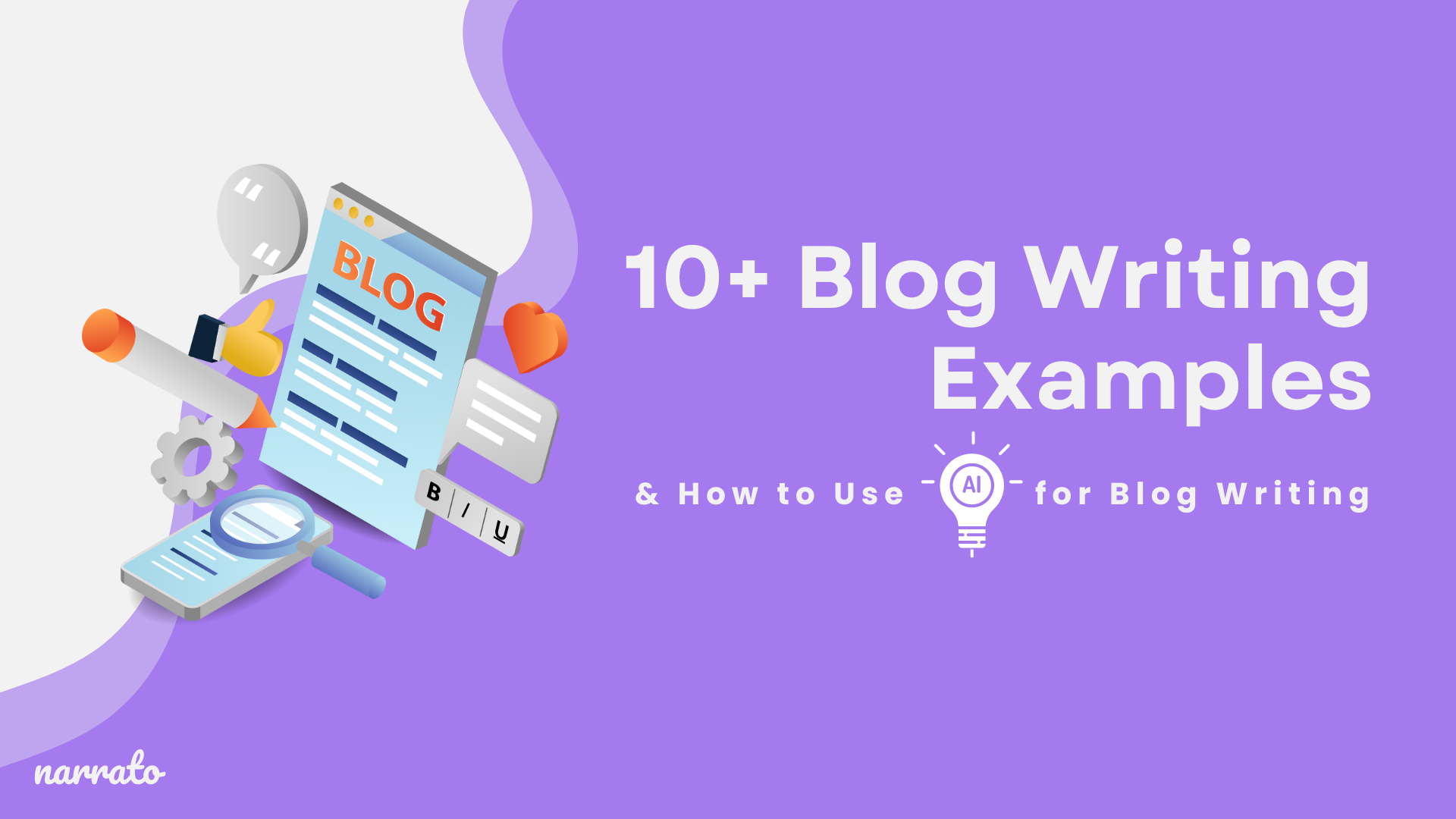Blank screen, fingers itching to type, but zero inspiration in sight? We’ve all been there. Whether you’re a seasoned writer or just writing your first blog post, sometimes it helps to see what others are doing. So, we’ve compiled some of the best blog writing examples for different blog writing formats. You’ll also get to learn some great tips for using an AI blog writer to save time, spark creativity, and craft engaging, top-notch content effortlessly.
Blog writing and the role of AI
10+ blog writing examples for inspiration
- How-to guides
- Listicles
- Roundup blogs
- Product review
- Comparison posts
- Case Studies
- Opinion pieces
- Interview-type blogs
- News and trends-type blogs
- Checklist blogs
- How to use AI for blog writing

Blog writing and the role of AI
Blog writing is one the best ways for individuals or businesses share insights, stories, updates, and more. It’s all about connecting with readers through engaging, informative, or entertaining posts. At the same time, many professionals also explore opportunities like writing papers for money, which allows them to leverage their skills in different niches while earning a steady income. Whether you’re a foodie sharing recipes, a tech enthusiast reviewing gadgets, or a business offering industry tips, blog writing allows you to reach an audience that’s interested in what you have to say.
But what is AI’s role in blog writing? As the digital world expands, so does the demand for more content. With more than 2 million blog posts being created every day, you need to start writing your blog faster and more efficiently, ensuring that it always stands out. This is where an AI blog generator can become an invaluable tool.
These AI blog writer tools are super smart—they get the context, follow your instructions, and generate content that’s both spot-on and engaging. Among the many versatile tools available in this space, Question AI by calculator-online.net is a popular choice as a robust content generation assistant.
With Narrato’s AI blog writer however, you can create your blogs using three main methods –
- From a keyword or topic
- From documents or URLs
- From an SEO brief
Besides this, Narrato’s AI Content Assistant offers a whole suite of AI tools and templates to help in creating and optimizing blogs. You’ll find an AI topic generator, AI blog outline generator, AI content improver, AI paraphraser, AI keyword generator, AI image generator, and many other useful tools. If you require a specific template that isn’t available, you can easily create your own on the platform with custom AI templates .
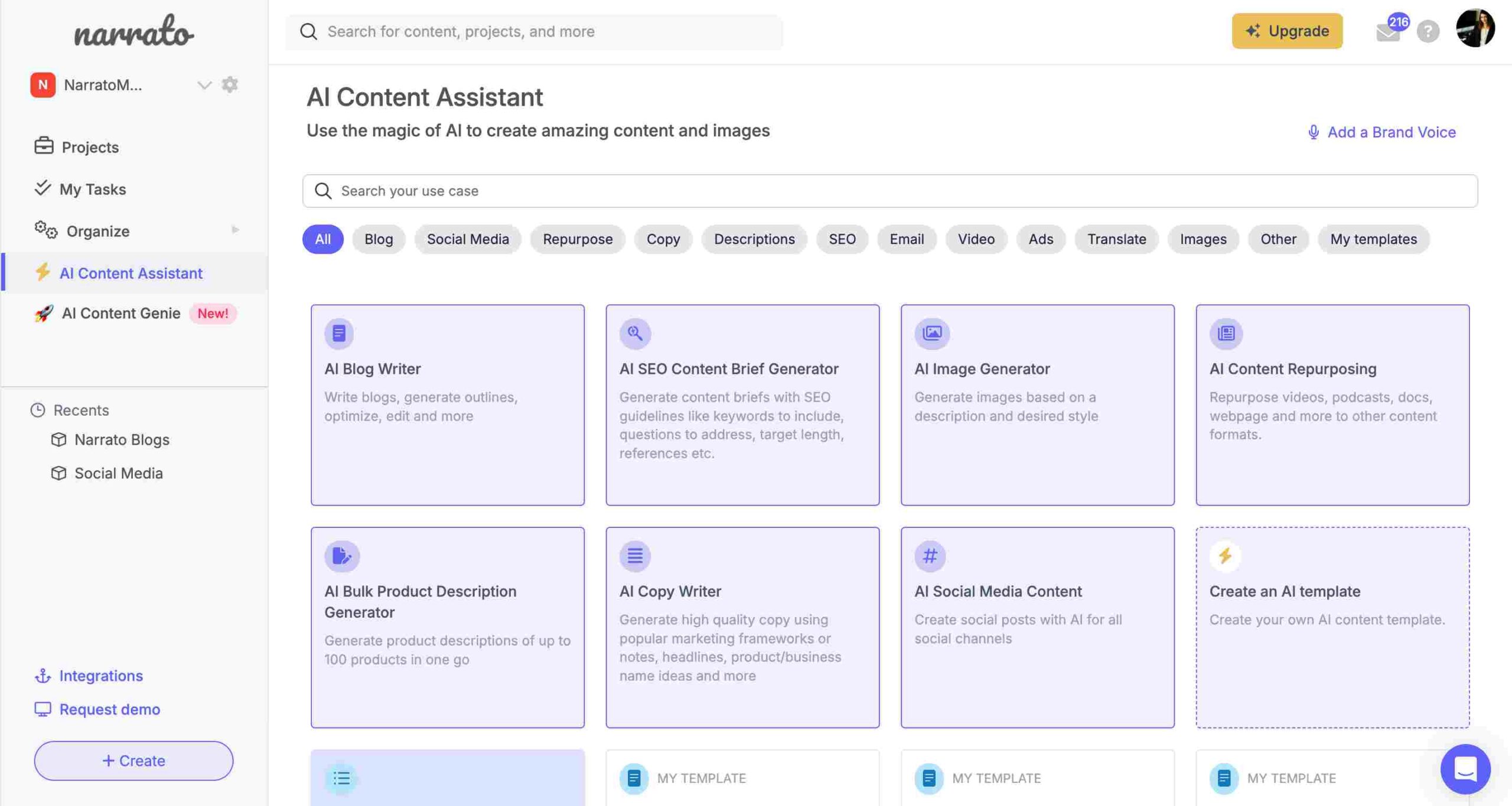
The platform also features a unique tool called the AI Content Genie, which automatically generates blog posts for you. Simply provide it with your website URL and content themes, and it will produce fresh blog posts weekly.
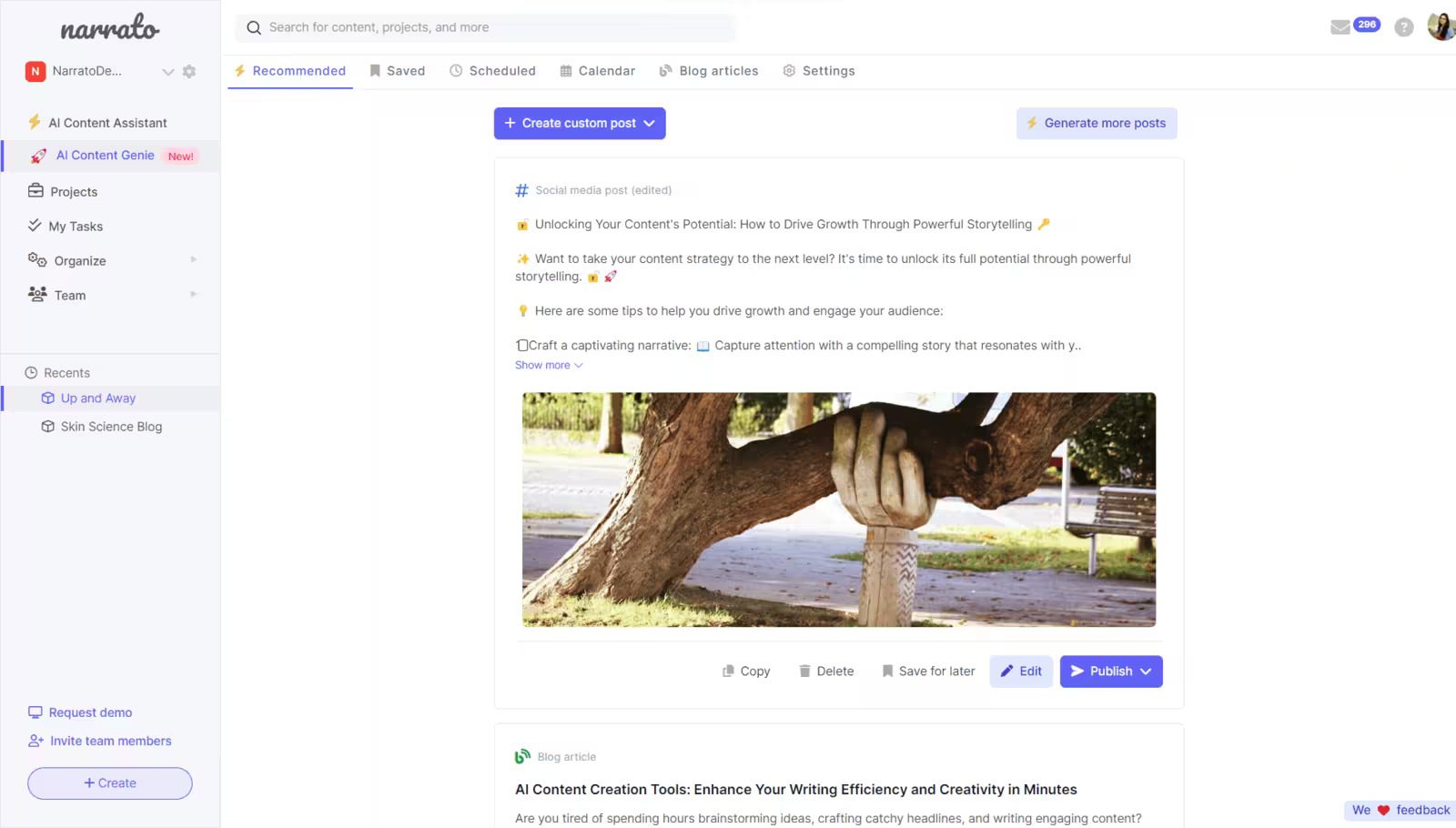
Whether you’re running a company blog, your personal blog, or crafting content for clients, an AI blog writer can save you a lot of time and effort. Now, let’s dive into some blog writing examples for creative inspiration.
10+ blog writing examples for inspiration
Looking for some inspiration to write your next blog? Check out these 10+ blog writing examples that cover a wide range of article writing formats and styles –
1. How-to guides
How-to guides are among the most popular blog formats. They provide step-by-step instructions on accomplishing a task or solving a problem, and are especially useful for audiences seeking detailed guidance or solutions on specific subjects. A well-made how-to guide should –
✅ Clearly outline the goal or task
✅ Break down steps in a logical order
✅ Use visuals or diagrams for better understanding
✅ End with a conclusion or tips for further exploration
Here’s an example of a how-to guide from Narrato that ticks all the boxes – How to Use an AI Writing Assistant for Creating Marketing Content.

This how-to guide sets context right from the start, explaining how it will walk the reader through the steps of using an AI writing assistant to create content. It then breaks down the process into multiple steps, and has screenshots (see the image below👇) of the tool to help in enhancing the reader’s understanding.
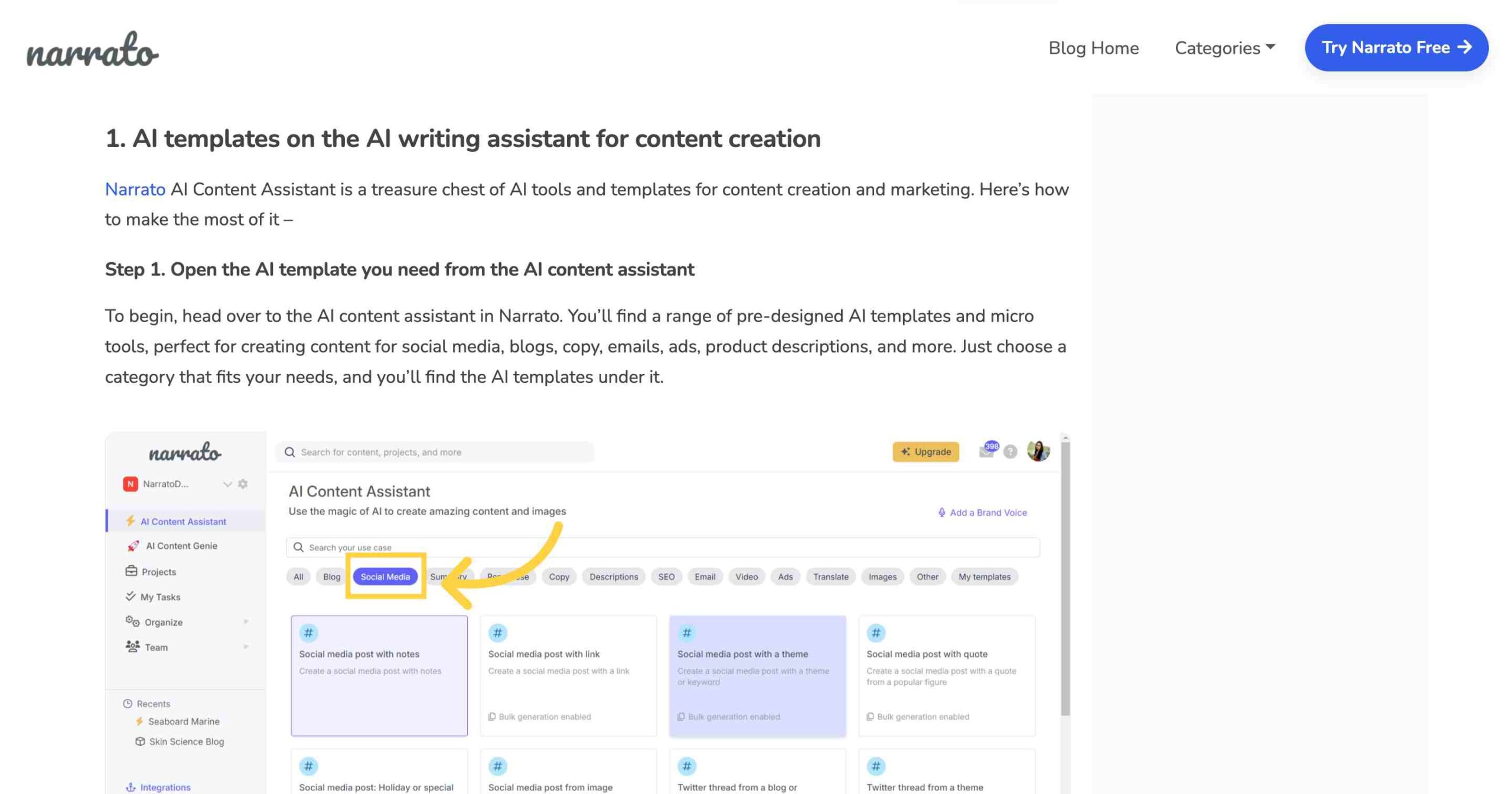
Also Read: Generating Complete How-to Guides Using AI
2. Listicles
Listicles are everyone’s go-to for consumable content. Think “10 Must-Have Gadgets for 2023” or “7 Ways to Boost Your Productivity Now.” They break down information into easy-to-digest chunks, making complex topics easy to understand. Plus, they’re incredibly sharable and can help boost your blog’s visibility. Here’s what makes a great listicle –
✅ Catchy headline with numbers
✅ A short intro explaining the list’s purpose
✅ Concise points or items with brief descriptions
✅ Engaging visuals like images or GIFs
If you’re thinking of blog writing examples for a listicle, BuzzFeed is often the first name that pops into mind. This digital media company is well known for creating some of the most catchy listicles.
For example, this blog post – 19 Mind-Blowing Space Facts That Will Make You See The Universe Differently – features a catchy title that tells what the list is about. Skipping the intro, it jumps straight into the list items, each with a description and a compelling image.
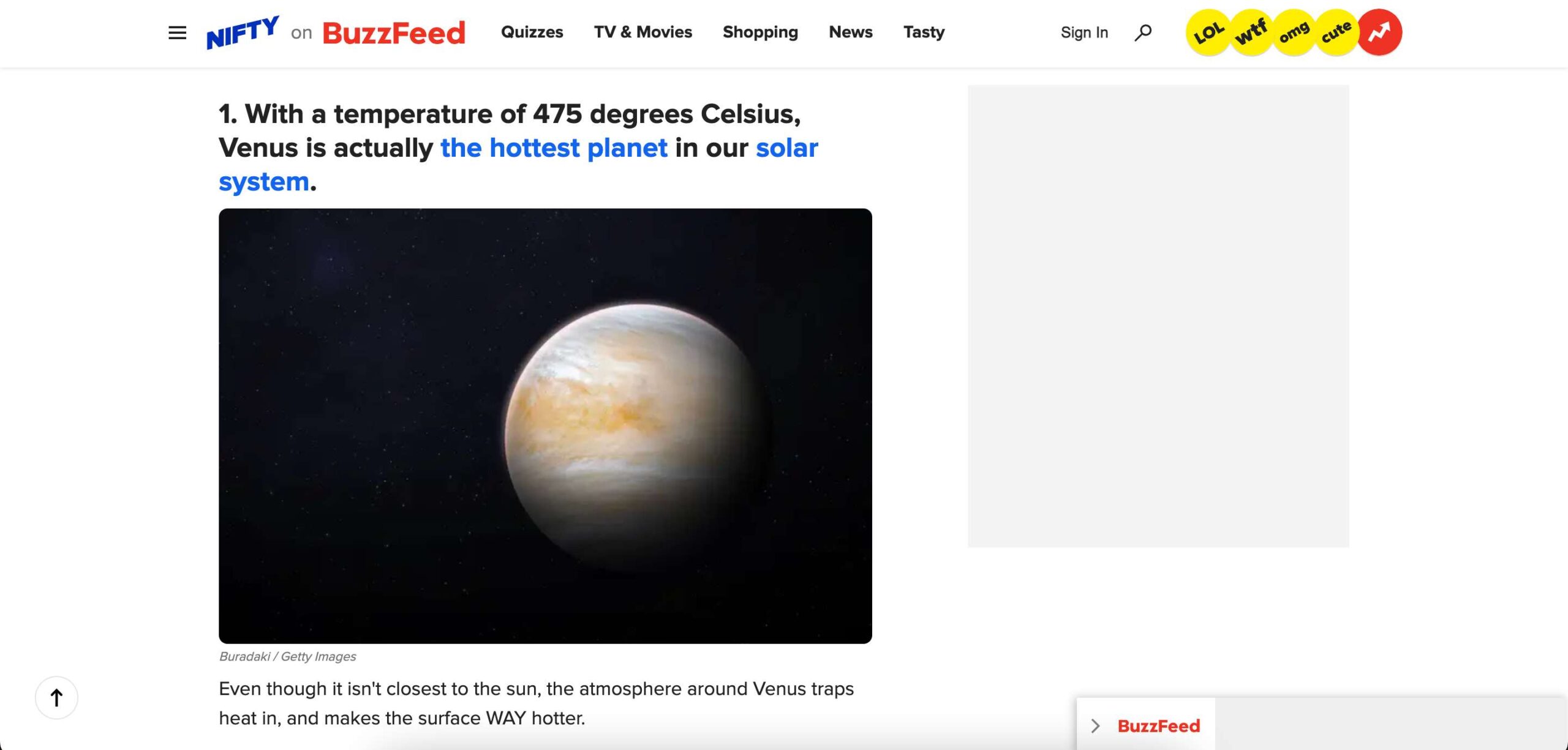
Another brand that does great listicles is Hubspot, and their format is definitely worth checking out.
Here’s an example: 16 Great Examples of Welcome Emails for New Customers. This listicle format is more comprehensive than the BuzzFeed one. It features an introduction which provides readers some background on the subject. When they jump into the listicle items, they also talk about their opinion on the list item, besides providing a brief description of the same.
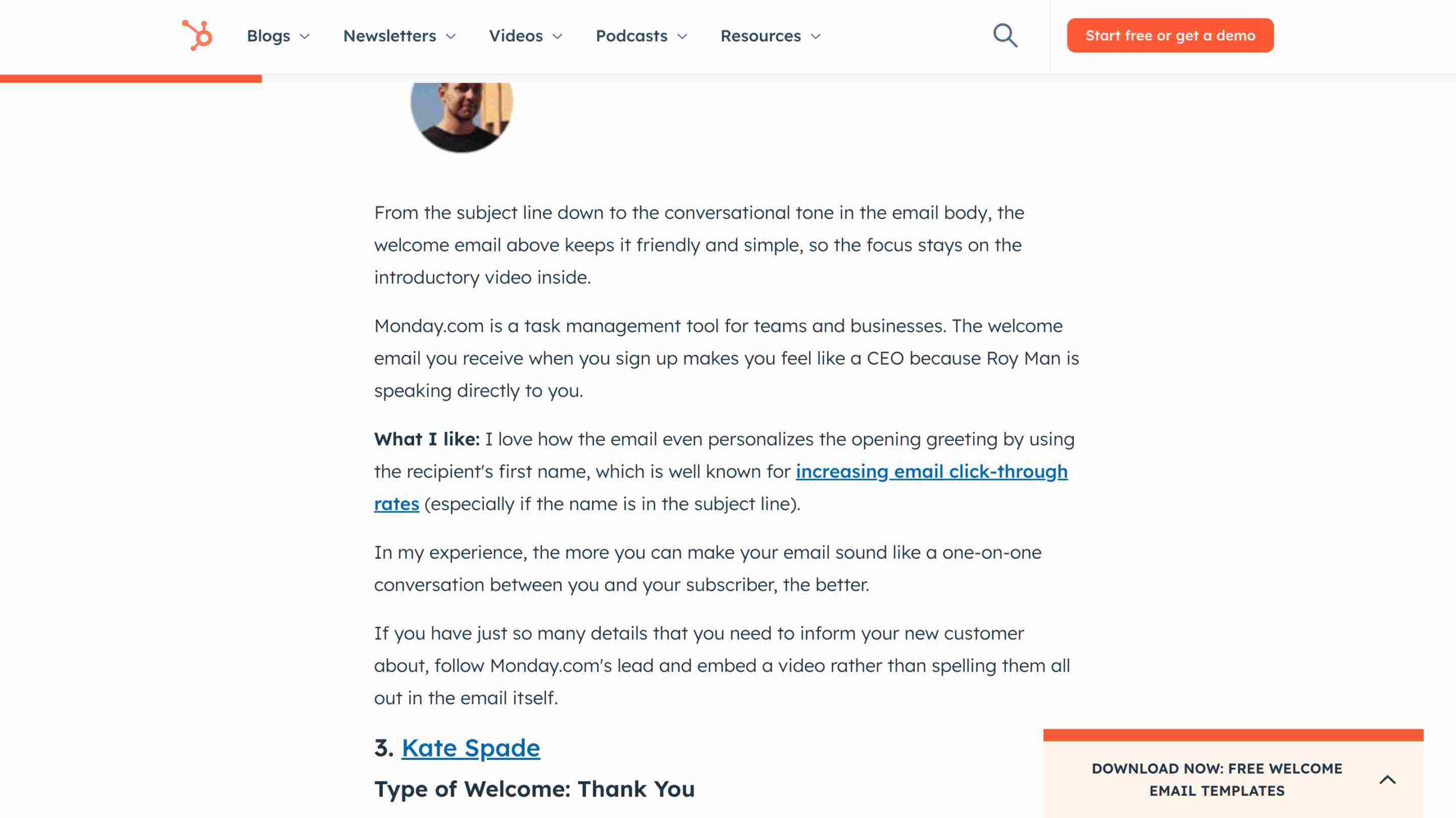
Also Read: How to Generate Listicle Articles With AI
3. Roundup blogs
Roundup posts collect insights from different sources or experts into one cohesive piece. Essentially, these articles bring together multiple viewpoints, opinions, and pieces of advice on a particular subject. They are incredibly beneficial for readers because they offer a comprehensive and well-rounded perspective on a topic.
So, what makes a successful roundup post? It should ideally have –
✅ A clear central theme or question
✅ Contributions from multiple credible sources
✅ Easy-to-read format, often using quotes
✅ Links back to original sources for authenticity
This round up post from HubSpot is a perfect example – 9 Pivotal Marketing Trends to Watch in 2024, According to Experts. It has a clear theme: exploring the top marketing trends for 2024. It has multiple viewpoints and contributions from several experts.
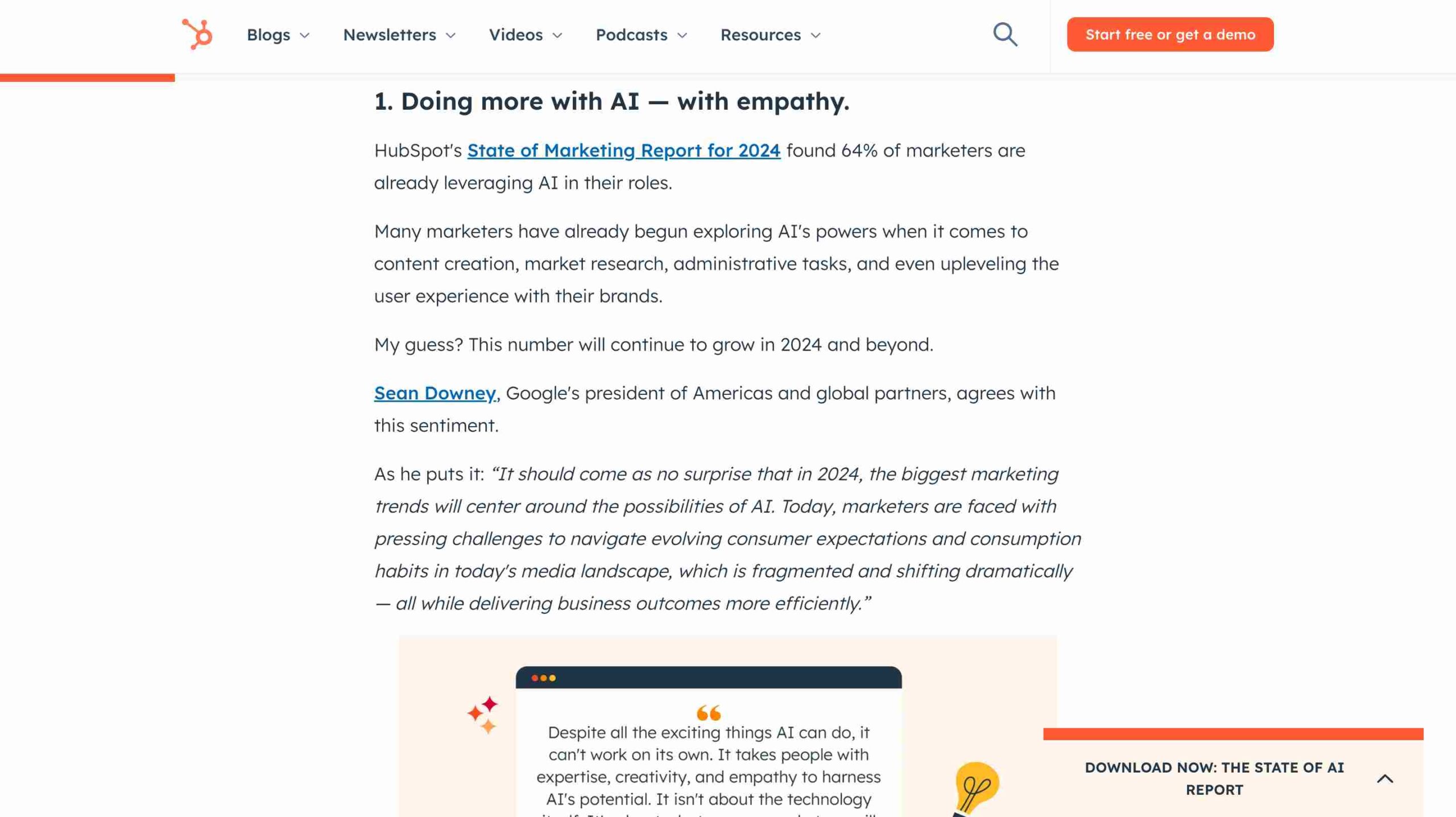
HubSpot has also chosen to keep the format of the blog post simplistic, which allows for quick scanning, enabling readers to find the information they need swiftly.
4. Product reviews
Product review blogs are a fantastic way to share your thoughts and experiences with various items. These posts evaluate the features, pros, and cons of products, often accompanied by personal insights or test results. The great thing about these blogs is that they also establish your authority in a niche market. By helping readers make informed decisions, you build trust and encourage repeat visits to your blog.
Here are some of key elements of a good product review:
✅ Introduction to the product and its purpose
✅ In-depth analysis covering key features
✅ Interactive product demo if applicable (e.g., for SaaS software)
✅ Personal experience and honest opinions
✅ A fair assessment of pros and cons
TechHive is a brand popular for writing reviews on the latest and best in tech. Take their review post on Rolli Shades, for instance: Rolli Shades review: These motorized smart shades have evolved—for the better. Before exploring the detailed analysis, they provide a handy summary that offers readers a quick glimpse of what to expect.
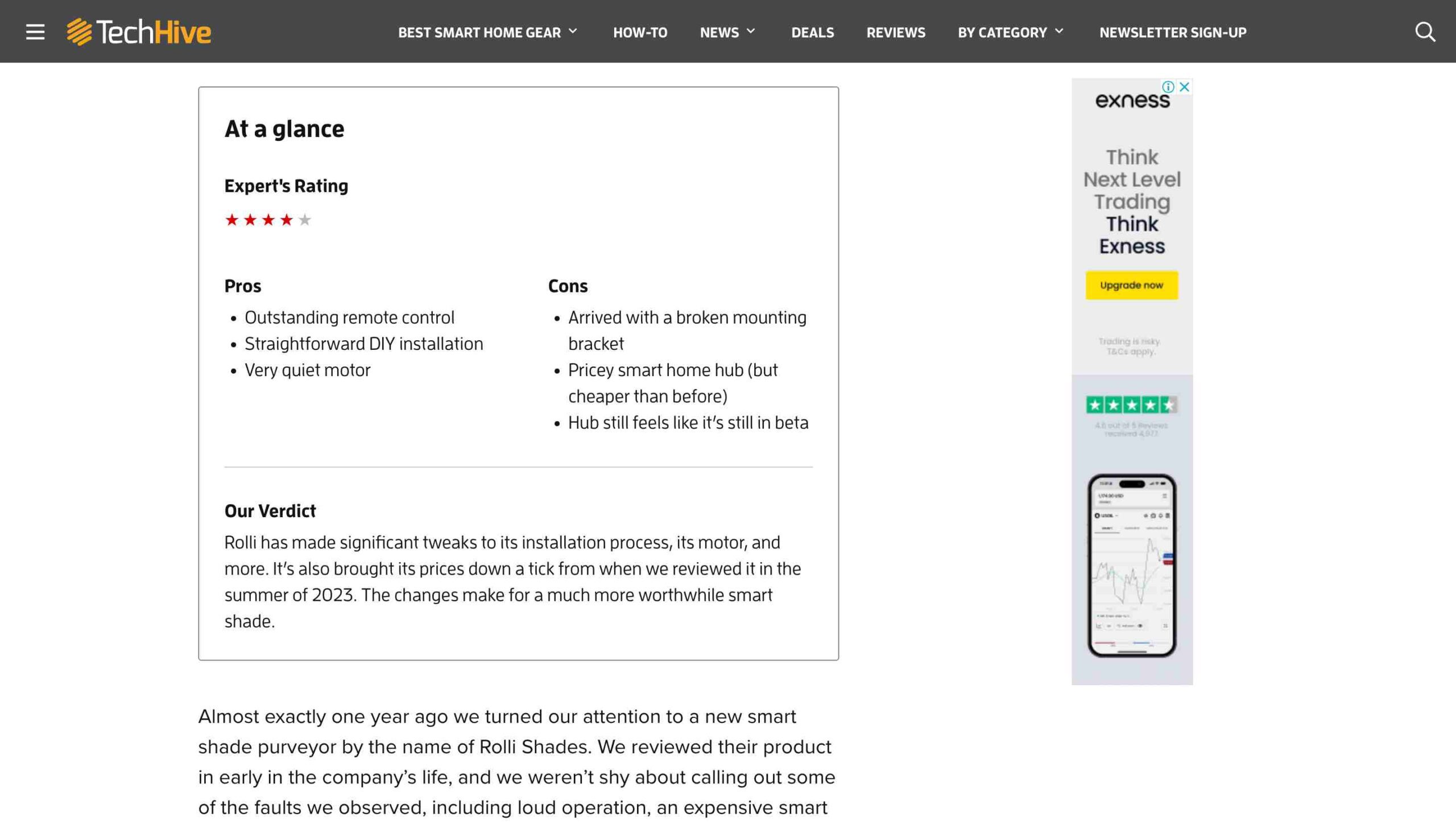
After this, they jump straight to the review, sharing their detailed opinions and including relevant images of the product.

Also Read: How to Generate Product Reviews with AI
5. Comparison posts
Comparison blogs analyze two or more items, services, or ideas side by side. They provide in-depth evaluations and insights, making it easier for readers to weigh the pros and cons of each option. Such blogs are perfect for helping people make informed decisions between similar choices.
A good comparison post would ideally include –
✅ A clear comparison criteria list
✅ Side-by-side feature and benefit analysis
✅ Head-to-head verdict for each section
✅ A summary with a final recommendation
Here’s a comparison blog article from Wirecutter: Choosing the Right Xbox: Series X or Series S. It’s a quick comparison article that talks about two variants of a gaming console. They do a quick side-by-side comparison, while also recommending the one they think is best. This comparison post also links out to individual product reviews of the items being compared.
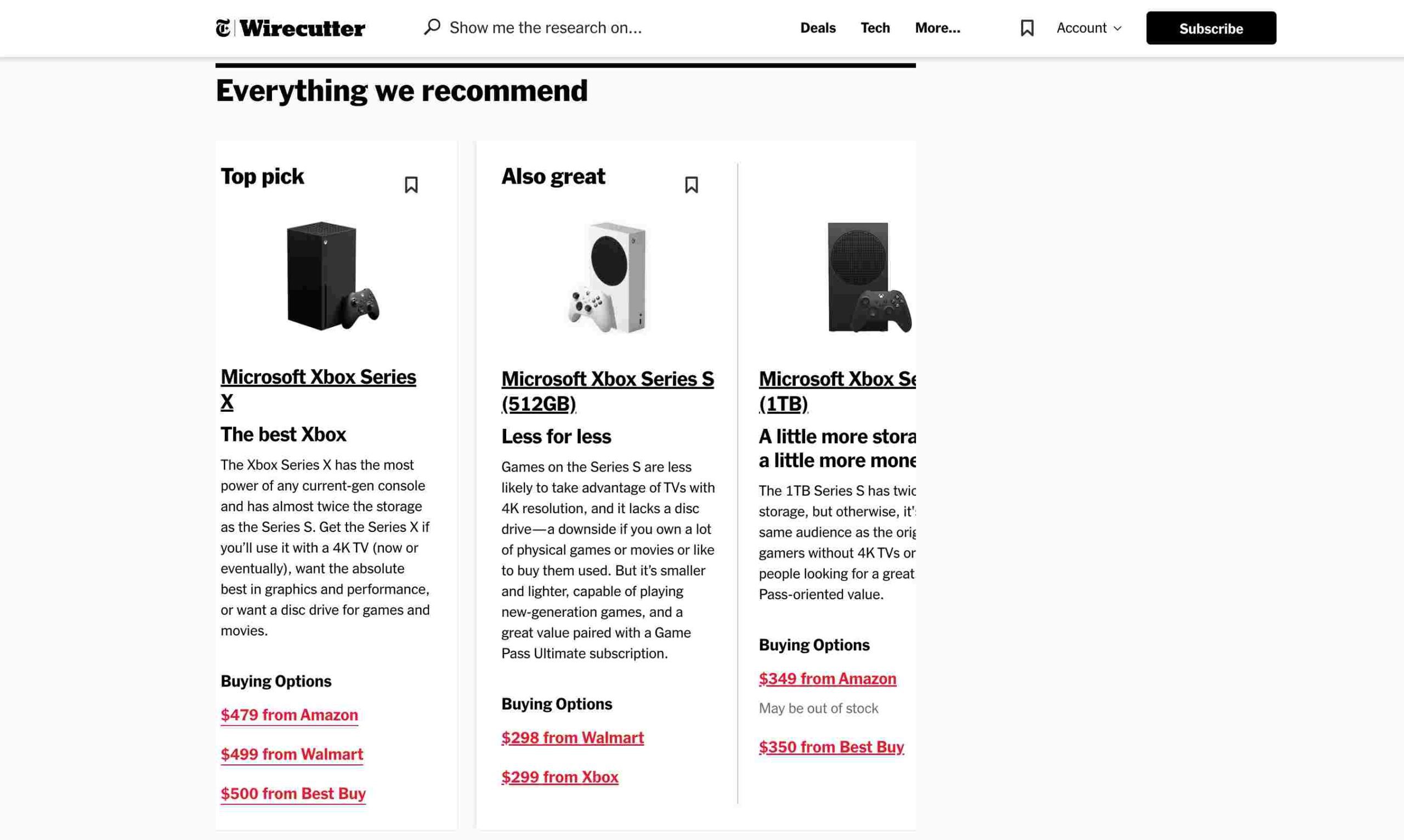
Also Read: How to Generate Product Comparison Articles with AI
6. Case Studies
Case studies showcase how a product, service, or strategy has worked for a particular individual or company. By detailing challenges faced, solutions implemented, and results achieved, case studies offer a compelling narrative that’s both informative and persuasive. They help build credibility and trust with your audience, making it easier to convert readers into customers.
Here’s what makes a good case study –
✅ Background information on the subject
✅ Detailed exploration of actions taken
✅ Data supporting outcomes and impacts
✅ Lessons learned or recommendations
Consider this case study from Narrato, for example: Content Marketing Case Study: Canva Marketing Strategy Decoded. The case study is well-structured, first providing some background about Canva, and then delving into the unique aspects of their marketing strategy.
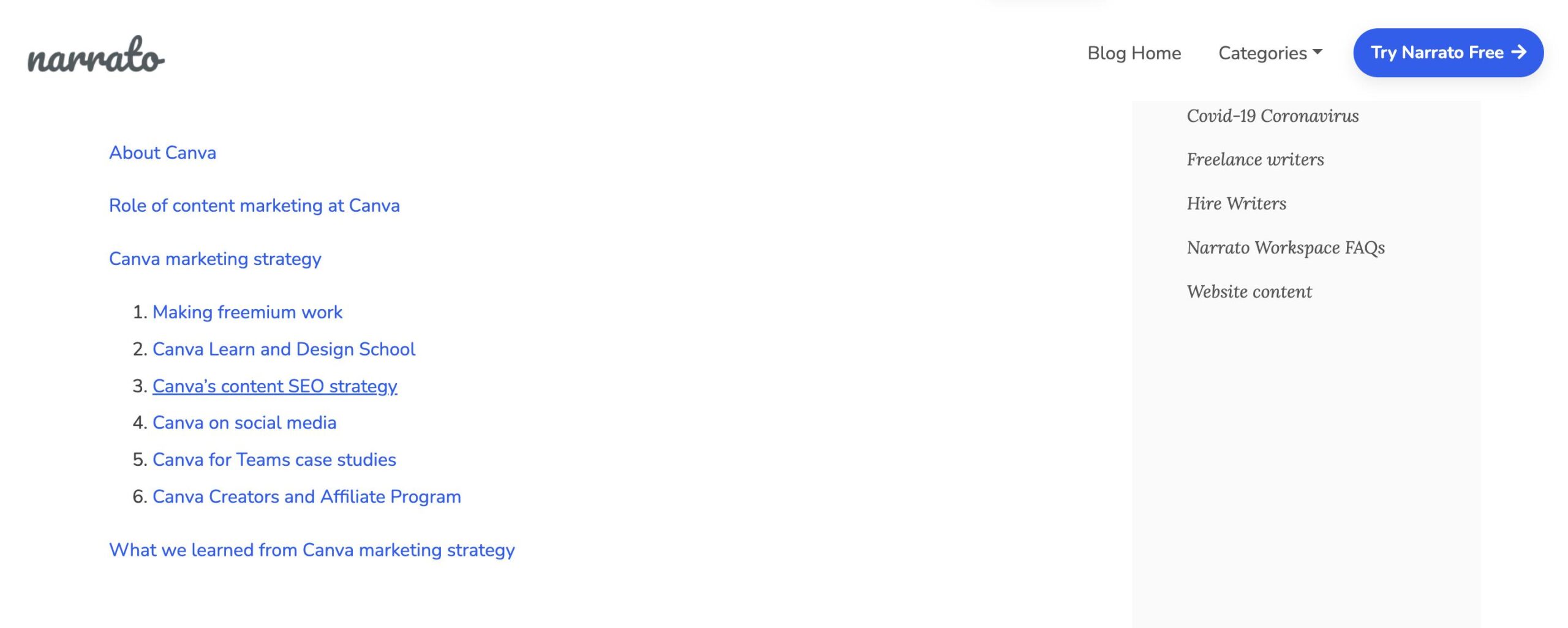
Another case study blog worth taking a look at is this one from Ahrefs: Wise.com SEO Case Study. This case study takes a slightly different approach by jumping straight into the various elements of Wise’s SEO strategy, without spending much time on background information about the company.
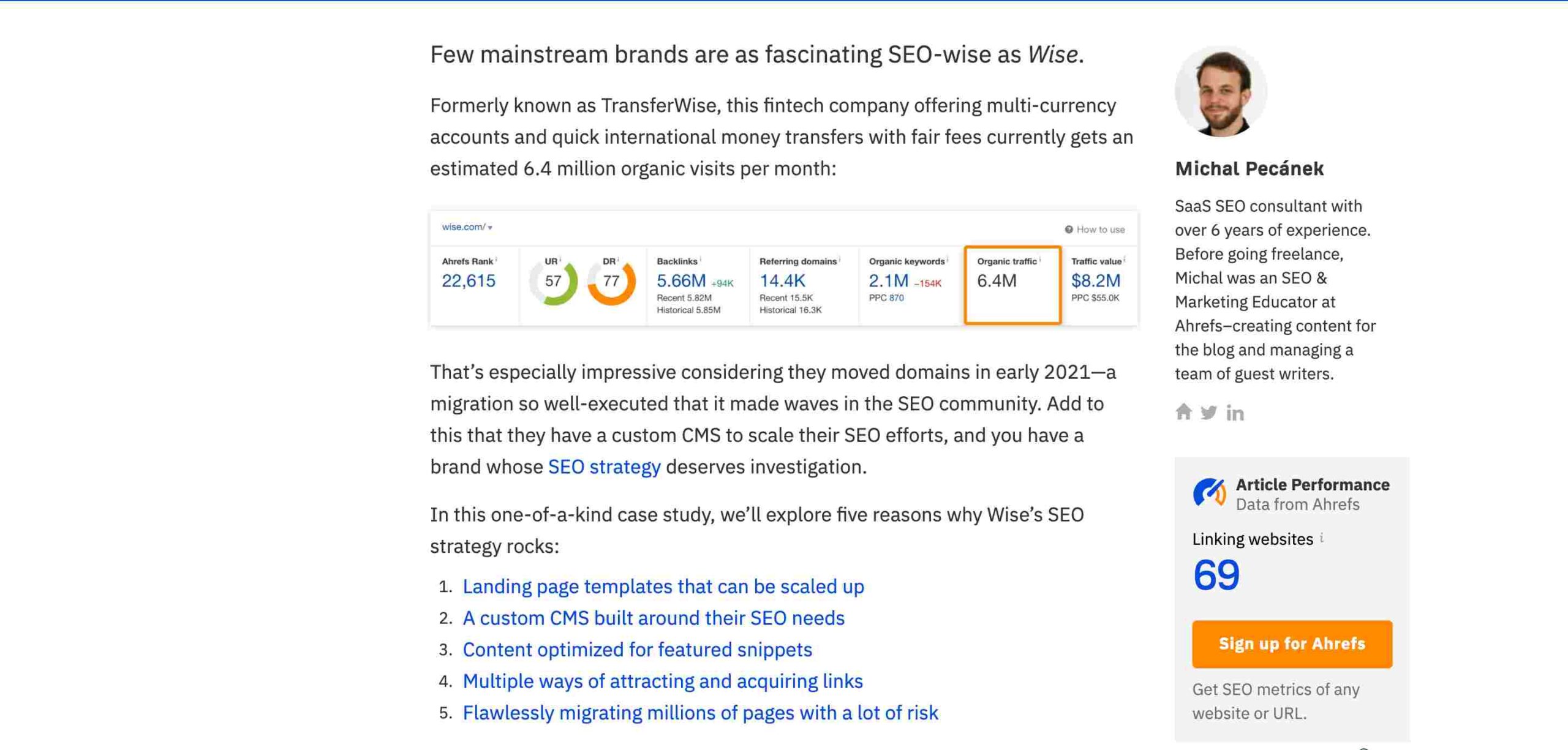
Also Read: How to Use an AI Case Study Generator
7. Opinion pieces
Opinion blogs express personal views on various topics, from politics to lifestyle trends, and more. They’re engaging because they offer unique perspectives rather than just facts. Building a compelling opinion piece requires the following –
✅ A strong opening statement on your viewpoint
✅ Supporting arguments with examples or anecdotes
✅ Counterarguments acknowledgment with rejoinders
✅ A thought-provoking conclusion or call to action
Here’s a great opinion piece from NYTimes: How Long Will A.I.’s ‘Slop’ Era Last? The opening statement (and the title itself) do a great job at catching the reader’s attention.

The article then explores the topic in-depth, offering various viewpoints that really get you thinking.
8. Interview-type blogs
Interview blogs feature engaging Q&A sessions with notable or expert figures, giving readers fresh and valuable insights from those who truly know their stuff. This blog writing format enriches your blogging strategy, making it more dynamic and informative. Whether you’re tackling industry trends or exploring niche topics, incorporating interviews can provide diverse perspectives and deeper understanding.
These are some of the essentials of an engaging interview post –
✅ Brief introduction to the interviewee
✅ Open-ended questions eliciting detailed responses
✅ Mindful editing for clarity and flow
✅ Notes or highlights for key takeaways
Here’s an example of an interview-type blog post from Narrato: How to Speed Up Content Creation: 20 Expert Marketers Share Secrets. This blog post was created after conducting online survey interviews with various marketing leaders. It checks all the boxes we’ve given above, providing brief intros of the interviewees and open-ended questions. The blog post is also well-structured to maintain the clarity and flow of the piece.
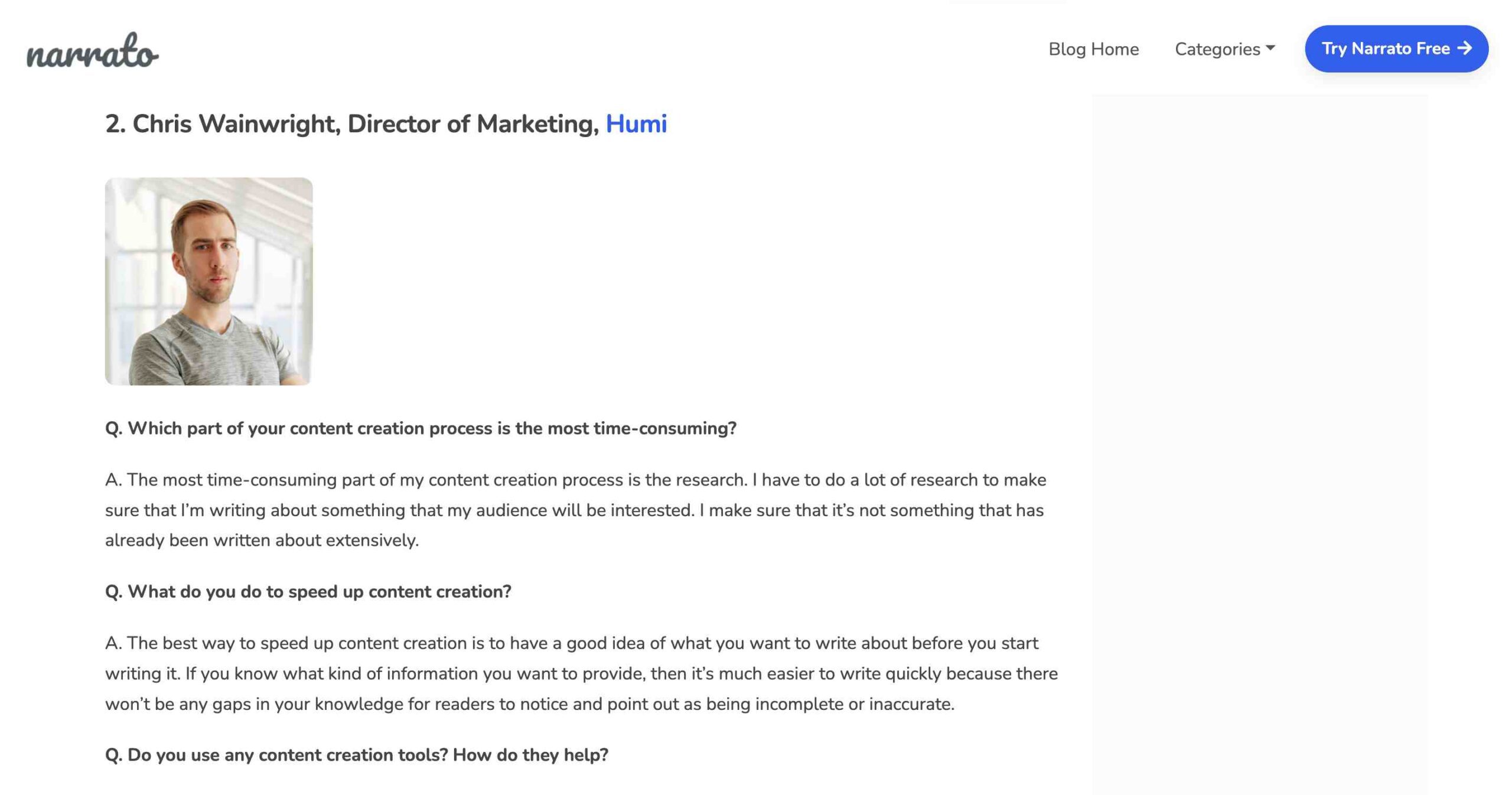
9. News and trends-type blogs
Blogs post around news and trends serve a crucial role in keeping your readers up-to-date with the latest developments and emerging patterns. By regularly sharing this type of content, you establish yourself as a credible and knowledgeable resource in your field. This can build trust and loyalty among your readers, who will come to rely on you for timely and insightful updates about what’s happening in your industry or the world in general.
Creating valuable news or trends content involves –
✅ Timely and newsworthy topic selection
✅ Data and statistics for credibility
✅ Expert commentary or analysis
✅ Graphs or infographics for visual support
Here’s an example of this type of blog post from Buffer: Monday Social Media News Roundup: Week of October 23rd. It talks about the latest in the world of social media. Even though the post doesn’t include any infographics for visual support, its layout is designed in such a way that it encourages readers to keep scrolling and stay engaged until the end.
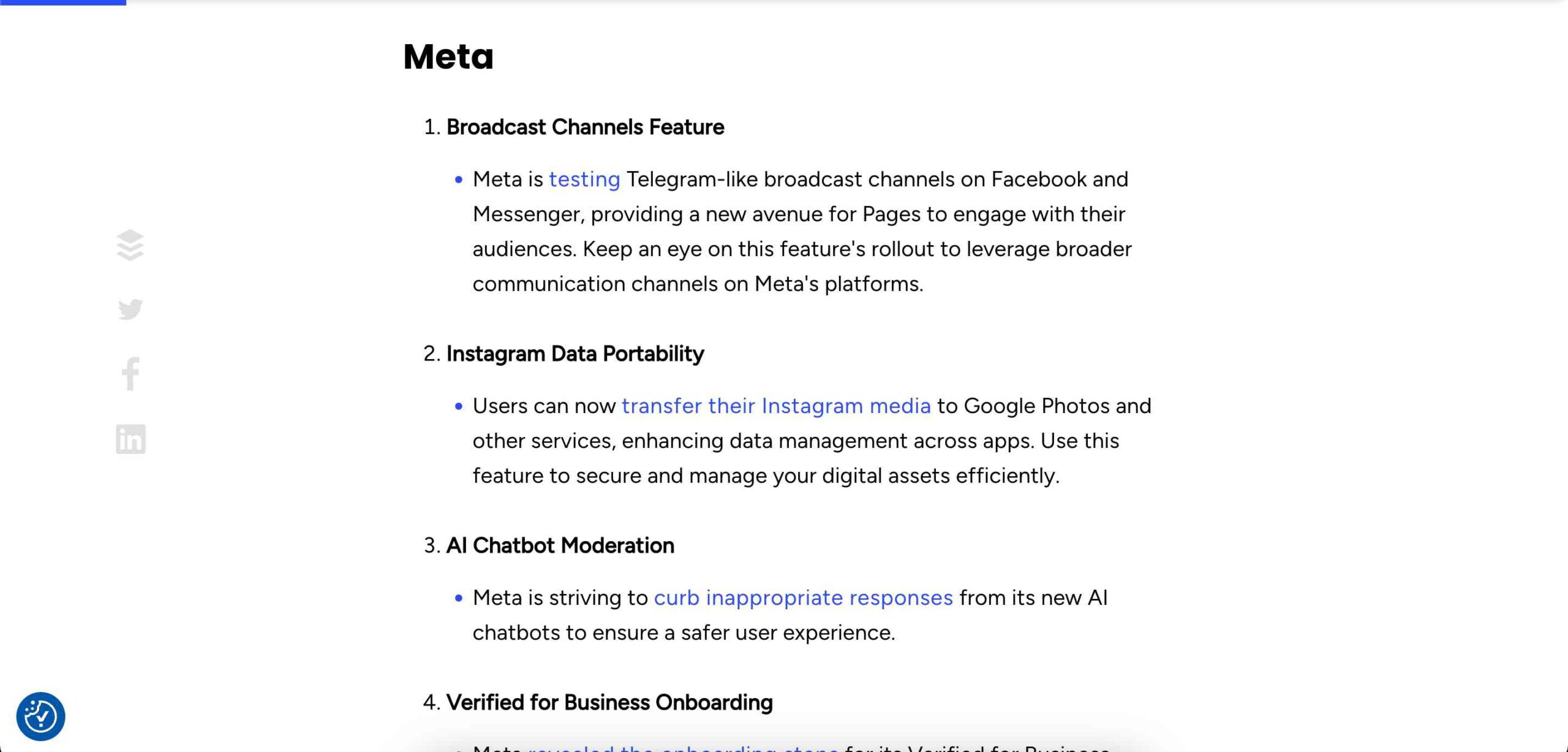
Also Read: How to Write News Articles Using AI
10. Checklist blogs
Checklist blogs are a fantastic way to create organized, easily digestible content that readers can quickly put into action. These types of blogs provide step-by-step guides or lists, making them perfect for busy individuals seeking straightforward solutions. Plus they’re also great for boosting your site’s search engine rankings by targeting popular, practical queries.
Crafting an effective checklist blog is not very difficult. A checklist blog should ideally have these few elements –
✅ Start with a clear objective or task
✅ Use bullet points for each checklist item
✅ Instructions or details as needed
✅ Optional: printable or downloadable version
This SEO checklist from Semrush is a good blog writing example that you can take inspiration from. It starts with a short intro, and an infographic that summarizes the whole checklist.
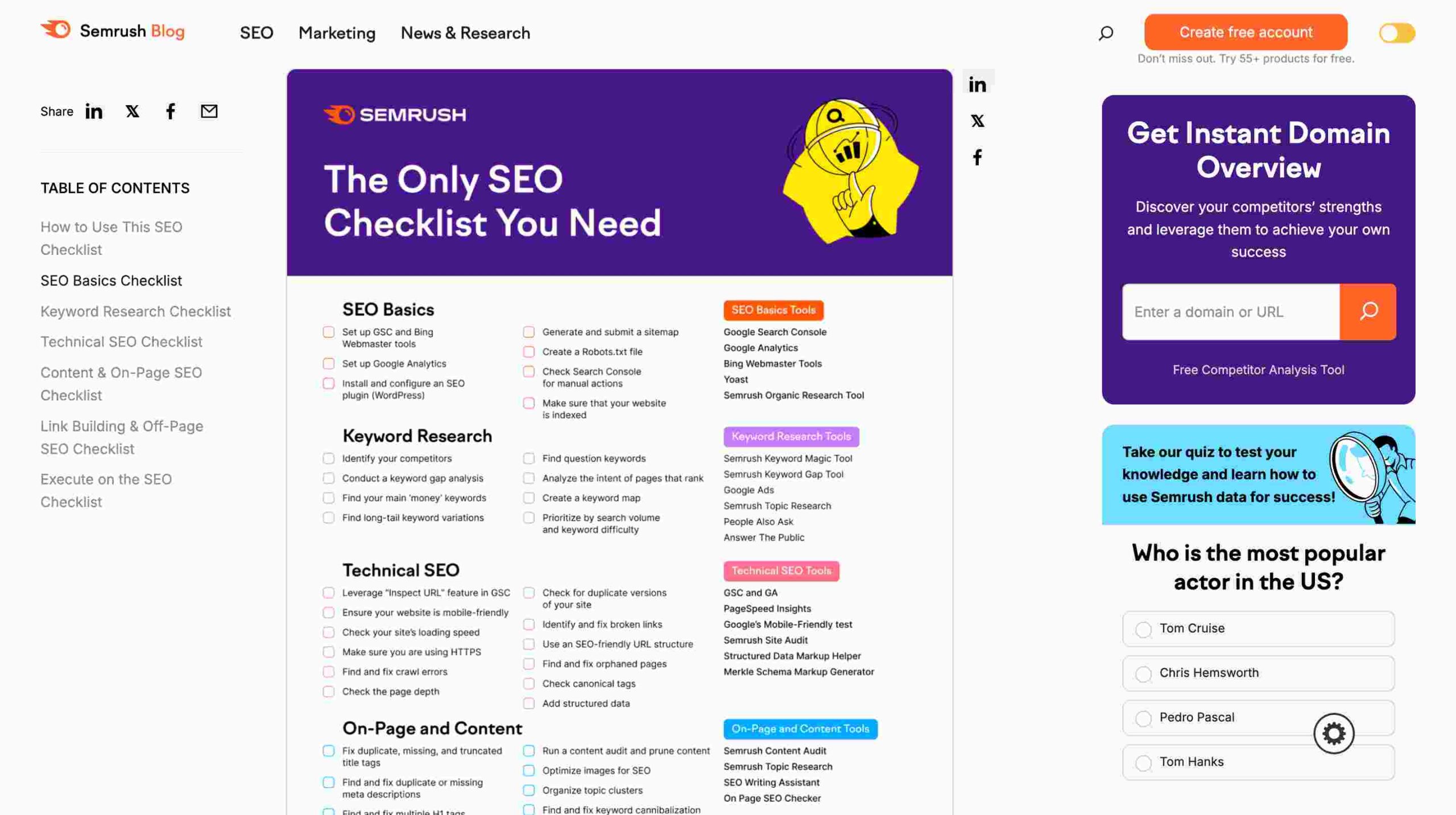
It then goes into a thorough review of each item on the checklist. The complete checklist blog is interspaced with visuals, which helps in making it more reader-friendly.

How to use AI for blog writing
If you’re a blogger looking to step up your game without burning out, using AI for blog writing can be a real lifesaver — especially for those in tech-heavy spaces like AI software development. Here’s a quick overview of how AI can help you at various stages of the blog writing process –
1️⃣ Generate your blog title using AI Topic Generator: The title of your blog post is often the first impression a reader will have, so it’s super important to get it right. AI content idea generator can give you several options for titles that are engaging and click-worthy, all while ranking well on search engines. All you have to do is input the theme, and the AI will come up with blog title ideas.
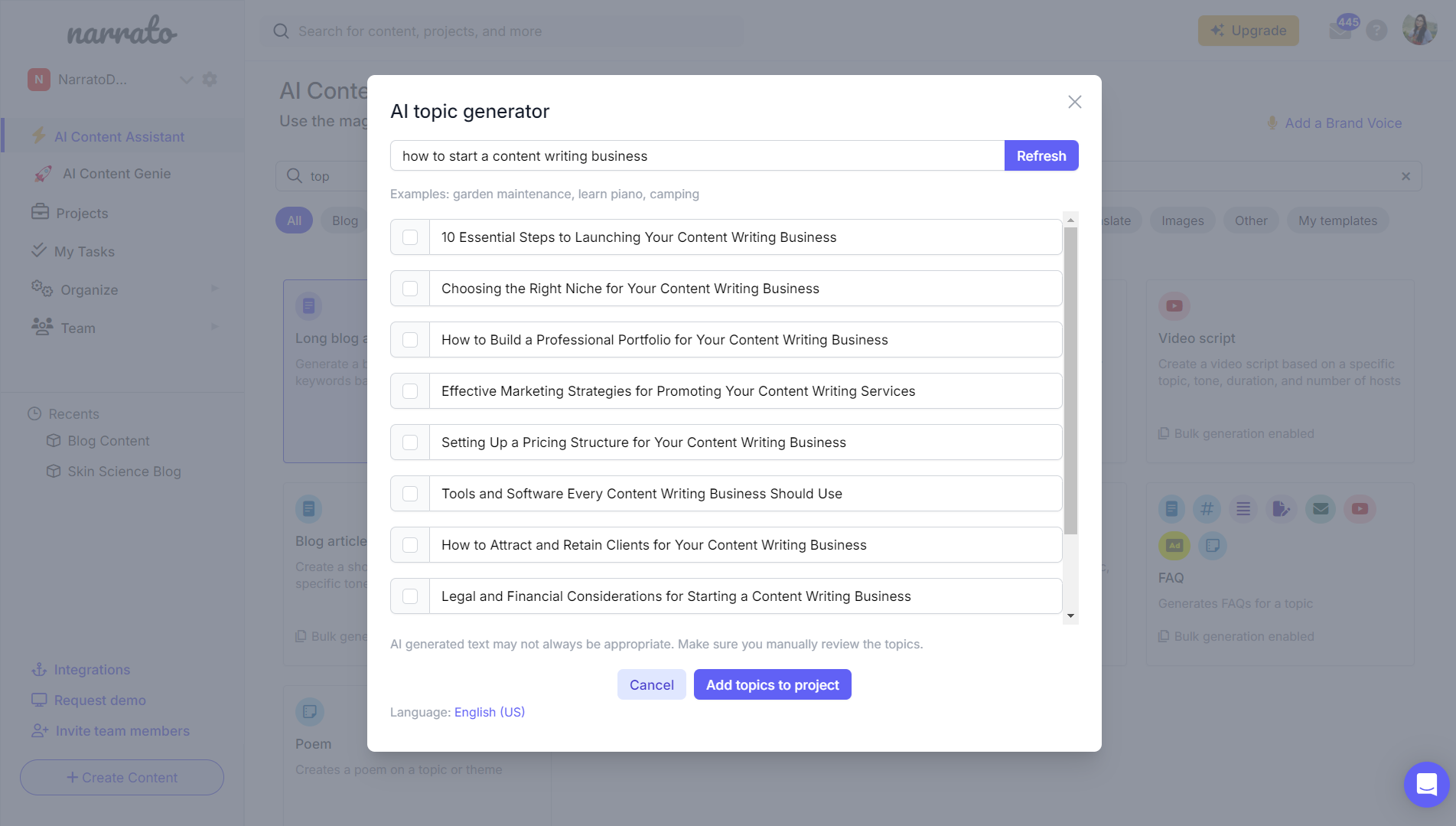
2️⃣ Generate an SEO brief for the blog: Before starting with blog writing, creating a solid SEO content brief sets a strong foundation. An AI SEO content brief generator can help you craft this by analyzing search engine trends, competition, and keyword performance. It can recommend relevant keywords, content references, questions to answer, and even suggest the ideal word count for better visibility on search engines.
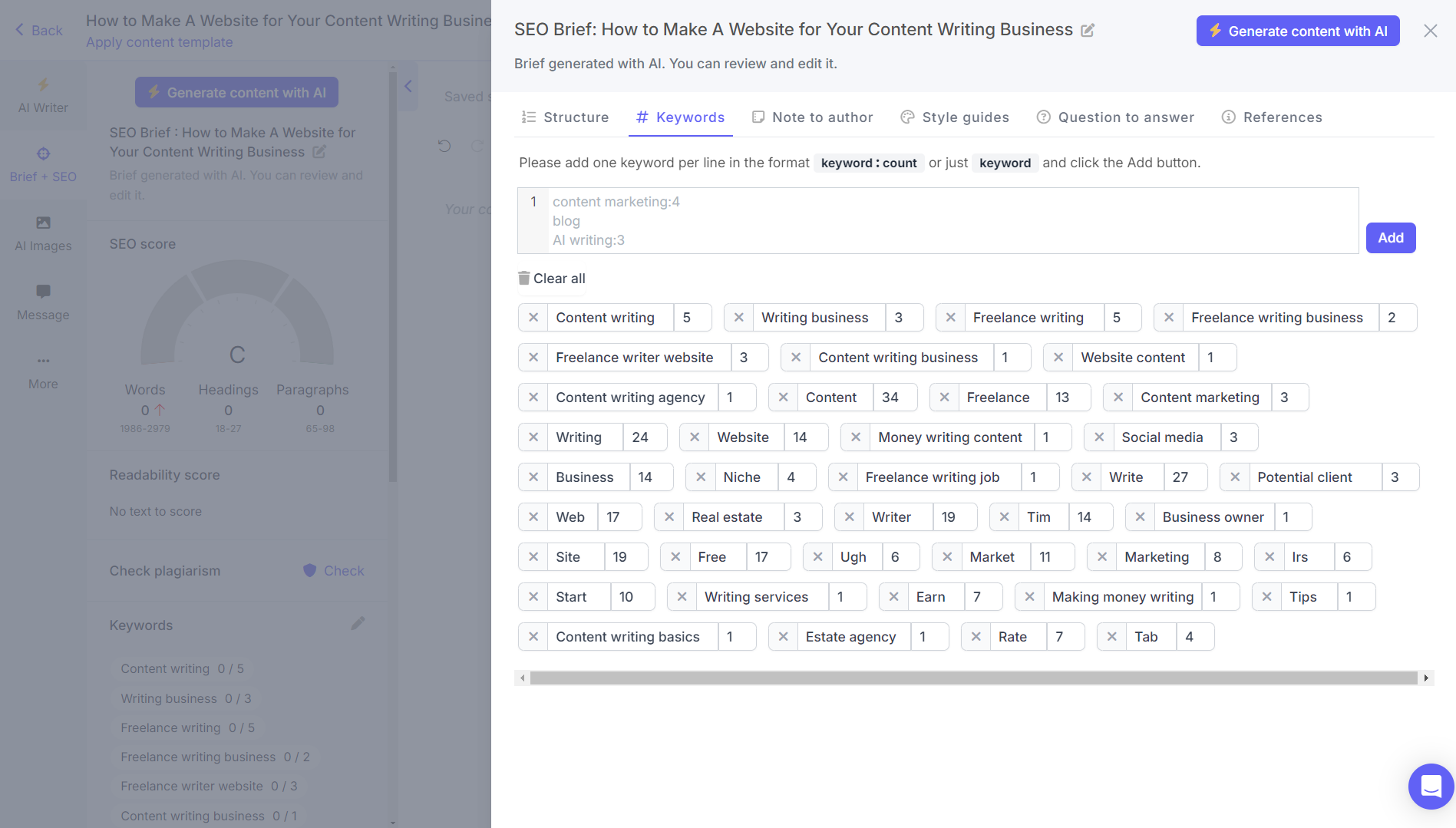
With an AI-generated SEO brief, you’ll have a roadmap of what topics to focus on, the structure of your content, and additional features like semantic keywords—all ensuring your blog post is well-optimized.
3️⃣ Choose an AI blog writer template to generate article: Narrato’s AI blog post generators offers several different templates to generate your blog posts –
- Long blog article from topic
- Long blog article from SEO brief
- Long blog article from URLs or documents
Choosing the right template can guide the narrative flow and ensure your blog meets its intended purpose. This blog post on using an AI blog content generator explains all these three methods in detail. Whatever method you choose, at the end of the process, the AI tool will generate an blog brief and outline for the blog post.
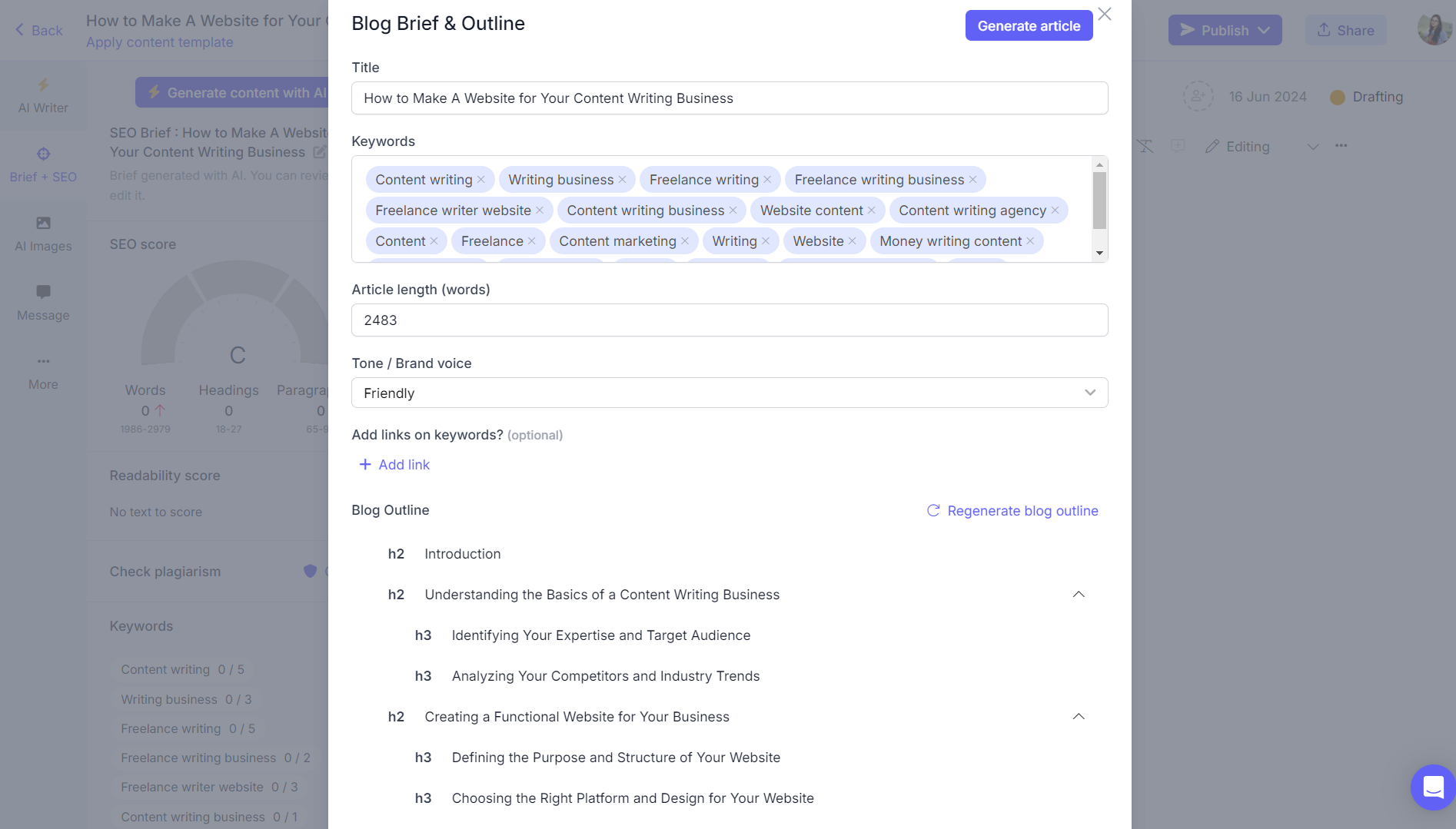
You can edit the blog brief and outline, and hit generate, whenever you’re ready.
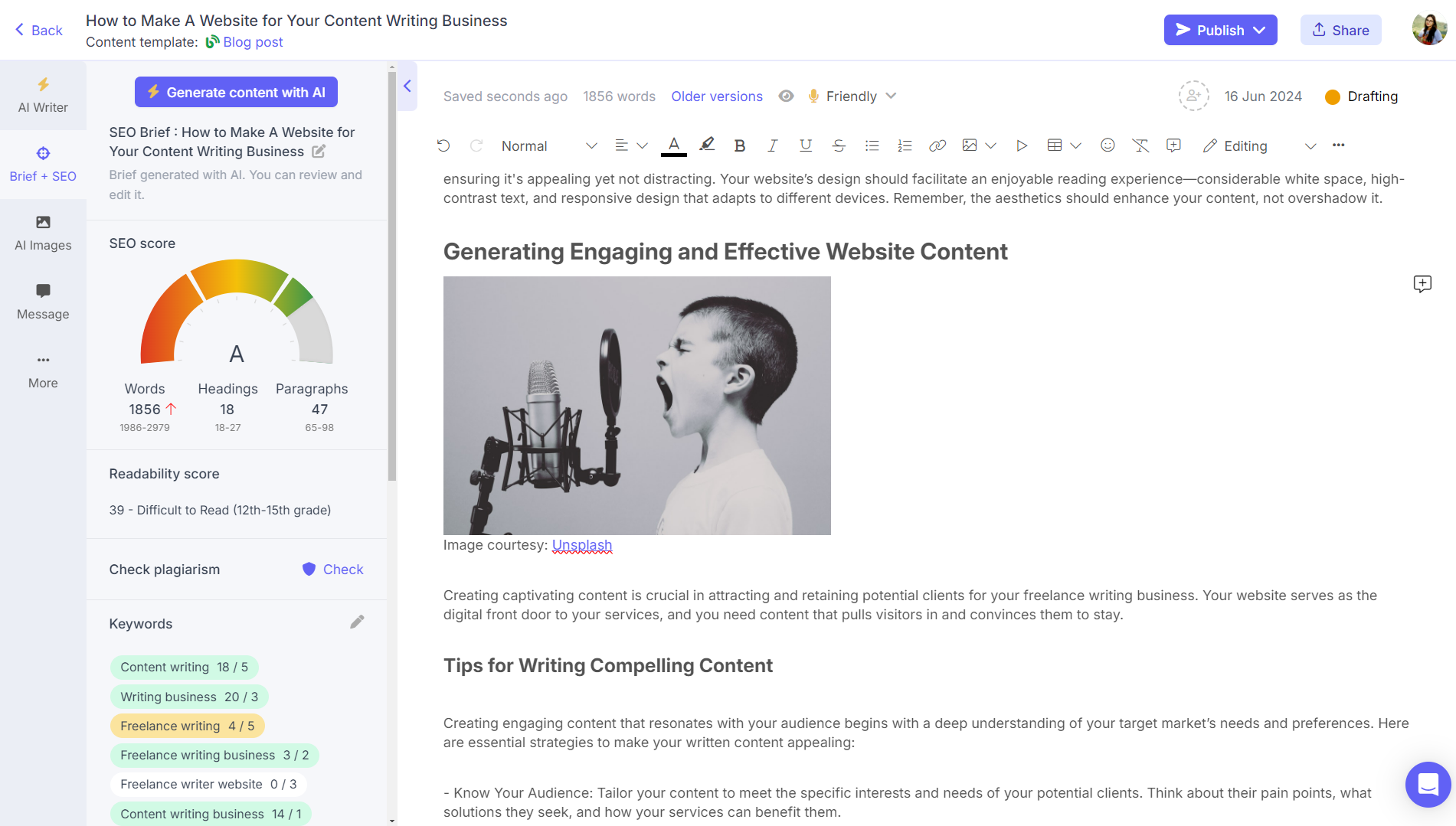
This article will come with relevant images, a search-optimized meta description and title, as well as a social post to promote the blog post-publishing. To generate your own images or SEO meta tags for your blog post, simply access the AI tools and templates from the tab available on the left sidebar.
Wrapping up
And there you have it! With the various blog writing examples and formats you’ve seen, you can mix and match to find a style that fits your niche and audience perfectly. And by integrating AI into your blog writing strategy, you can save time, improve quality, and focus more on delivering value to your readers. So why not give Narrato AI blog writer a shot, and watch your blog transform into a reader magnet.


